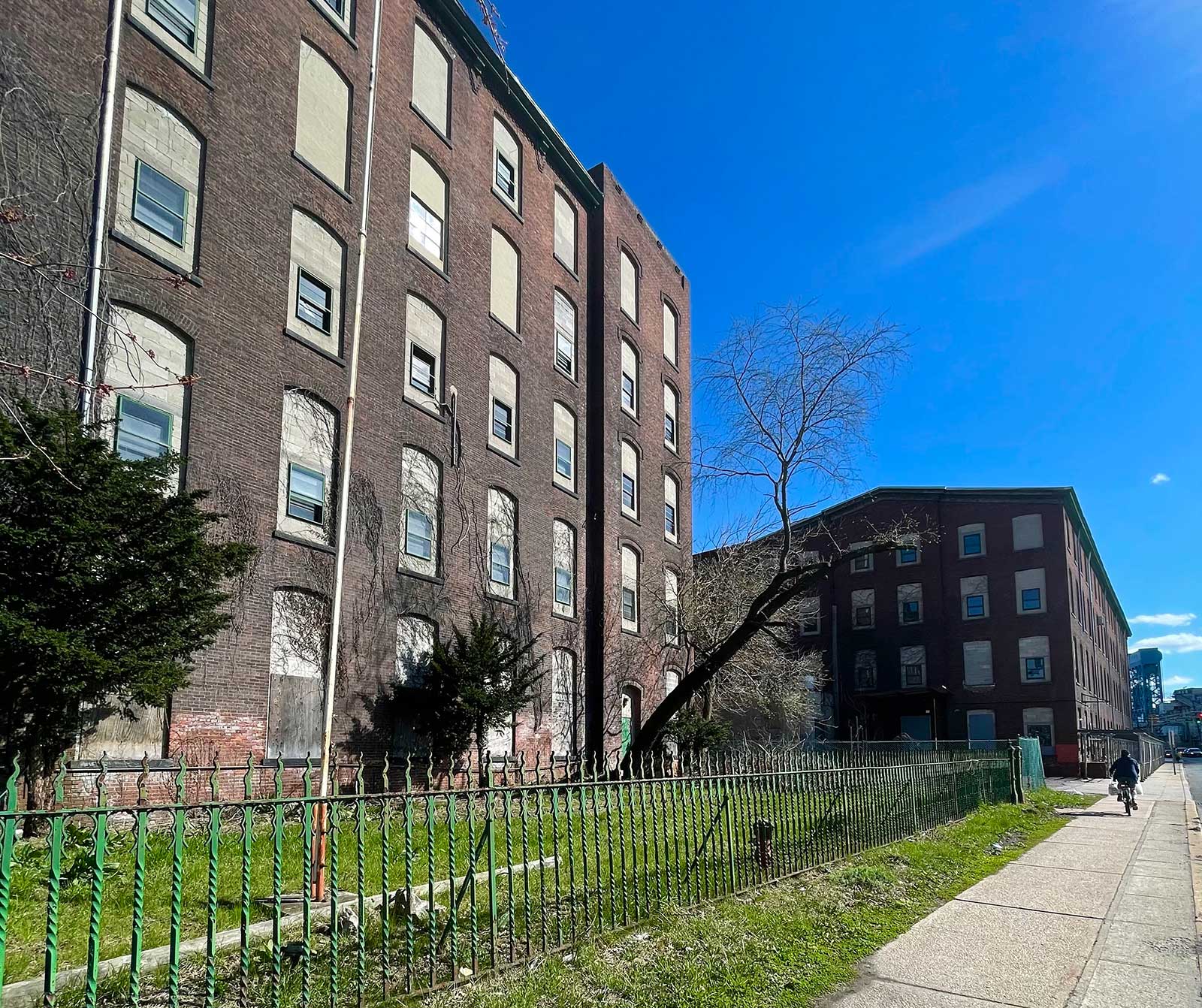

A 19th-century factory complex, where the world’s largest cotton thread company was headquartered until 1935, will become East Newark’s new town center when renovations are complete. Scaffolding and cranes mark the beginning of the restoration of the Clark Thread Company Historic District, built along the banks of the Passaic River in 1875. Two buildings in the courtyard are being demolished before work begins on the facade, Kevin Catrambone, special projects manager for East Newark, told Jersey Digs. The project, which is now called the East Newark Town Center, will offer more than 600 residences and 100,000 square feet of retail. The borough is counting on all this increased foot traffic to transform Central Avenue into a proper downtown corridor, Catrambone said. “We believe it will help transform and reshape our community as a whole,” Catrambone said. “This is only the beginning — more development is on the way.” The thread company, founded by two Scottish brothers George and William Clark, employed 1,000 people and spanned both sides of the river in the 1890s. By the time both brothers had died, the company merged with a competitor to form the world’s largest thread company. However, in 1935, the company moved south to cut operation costs. The complex was listed on the National Register of Historic Places in 1978. A number of interesting period details still exist among the buildings. For example, a pulley-activated alarm that once alerted the night watchmen in the towers can be found on one of the buildings. On Grant Avenue, a factory building features a ghost sign with the initials “O.N.T.” which stands for the Clark company’s moniker “Our New Thread.” And along the north border of the complex are abandoned train tracks of the defunct Newark Branch of the Erie Railroad. For those wishing to delve deeper into the history of the factory, the company’s co-owner, William Clark, lived across the river in Newark’s Mount Pleasant neighborhood. Clarke’s Gilded Age mansion at 346 Mount Prospect Avenue still exists and is used as the North Ward Center community house. It is one of the few buildings in Newark that belongs to Scottish immigrants.